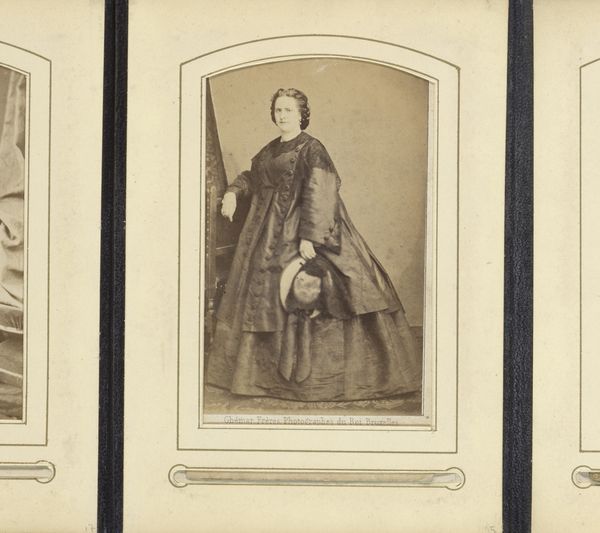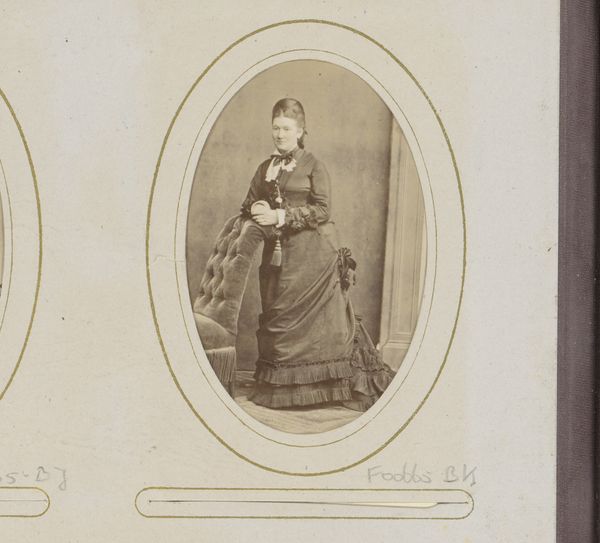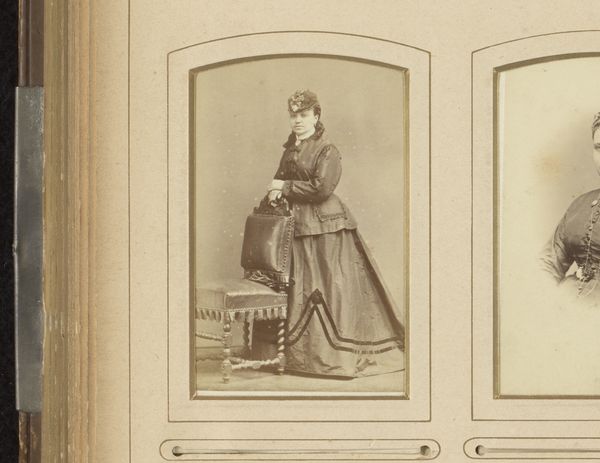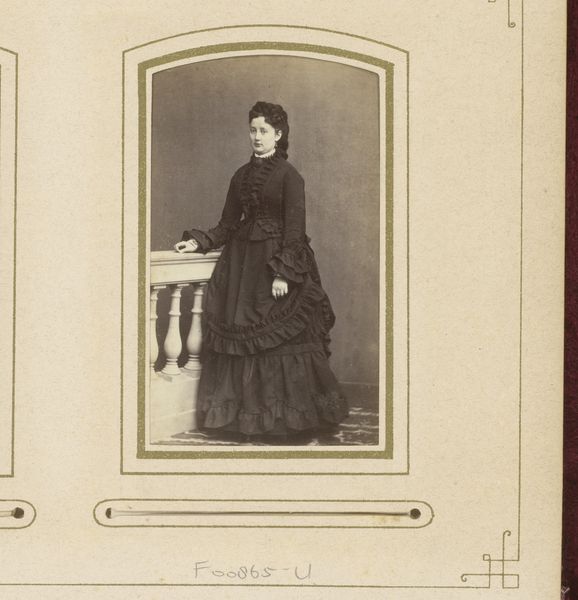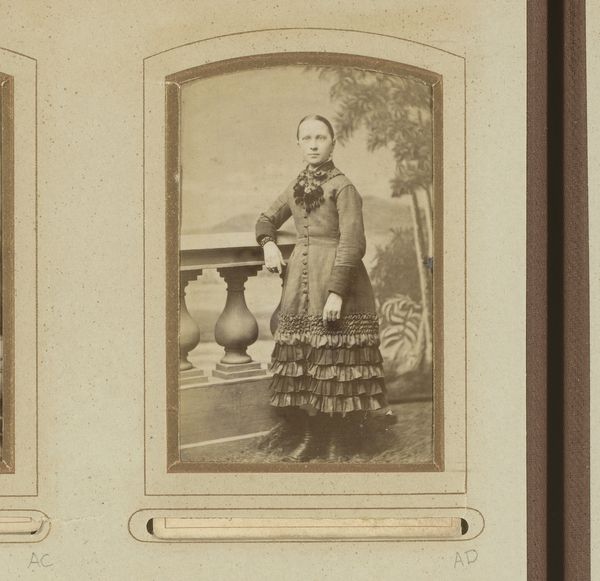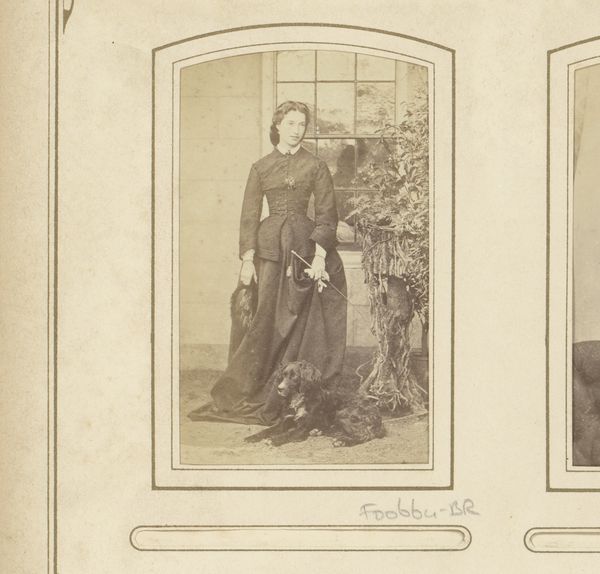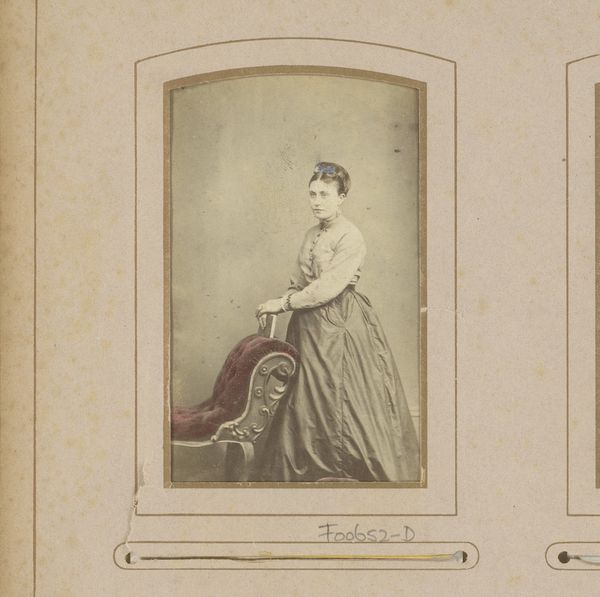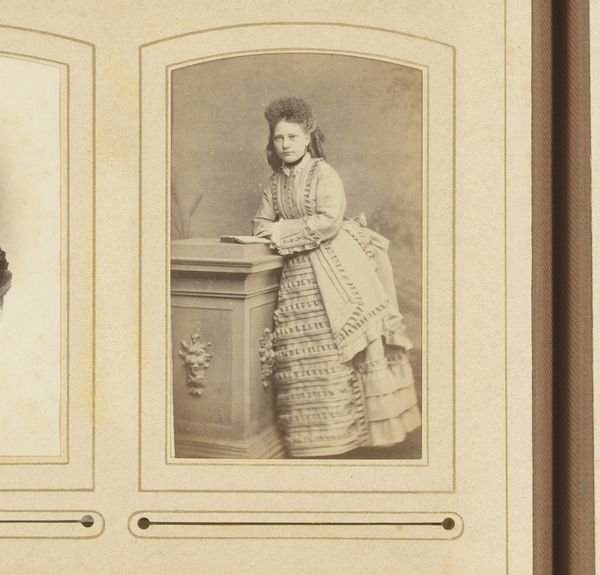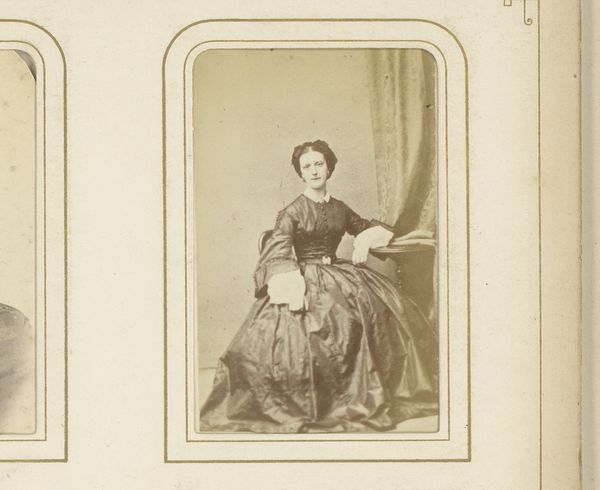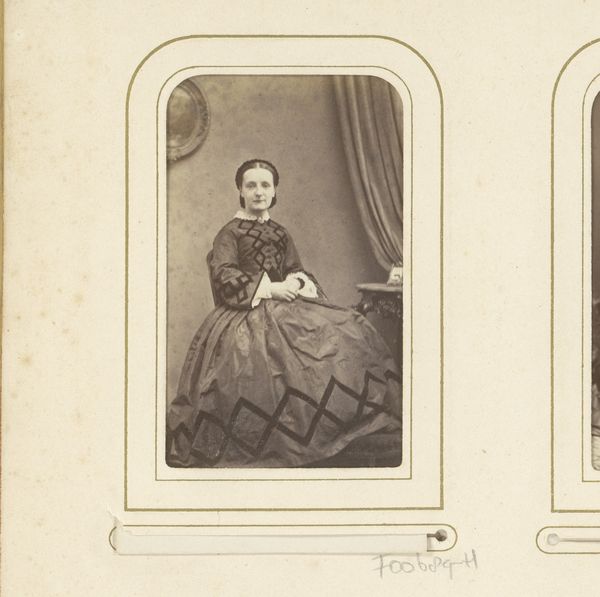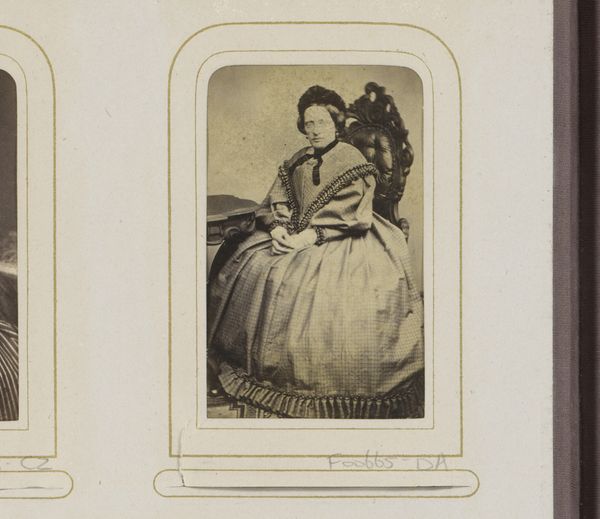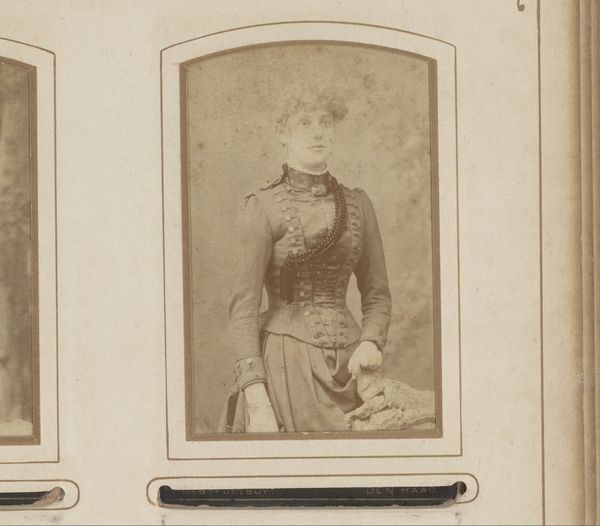
photography
#
portrait
#
photography
#
genre-painting
Dimensions: height 84 mm, width 52 mm
Copyright: Rijks Museum: Open Domain
Curator: Looking at this, I immediately think of fabric, the quality, and the construction of the clothes worn by this woman, probably around 1860. Editor: Yes, indeed. This is "Portret van een jonge vrouw, staand bij een stoel", taken sometime between 1858 and 1874, attributed to A. Böeseken. It's a fascinating example of early portrait photography. It reveals so much about the conventions and expectations placed upon women during that period. Curator: Precisely! The tight bodice, the elaborate trim. It screams "middle class" aspiring to higher social status. Think about the time invested in those details, the labor involved in producing each element. Photography like this documents those things. What dyes were used, how was the fabric woven, by whom? Editor: It also tells us about the performance of femininity. She is posed, right? There's a self-conscious awareness of the gaze, a carefully constructed identity. And photography played such a key role in democratizing access to portraiture, reshaping notions of visibility. How did women perceive themselves differently once photography became readily available? Curator: I'd say that she had input, she had power to communicate her vision. Also look at how the pose is built around a chair. Consider the production of that chair, and its importance as a stage to hold a photographic sitter! What labour made that prop available? Editor: Absolutely. I see the photograph itself as a carefully designed object. The staging is significant, of course, the placement of the figure, but the photographic format and context—appearing, as it does, within an album page—are equally important. This isn't merely a depiction of an individual, it’s the presentation of that image within a constructed, often very public, familial archive. These images would shape how family identity was viewed, both within the home, and externally. Curator: This piece prompts consideration of materiality, not just subject representation! These details ground it to its era of labour and the consumption of cloth in domestic display. It is, in short, history. Editor: For me, it is fascinating to think of this image and those like it populating so many middle class households across Europe, subtly altering family and gender dynamics through a powerful combination of technological innovation and artistic sensibility.
Comments
No comments
Be the first to comment and join the conversation on the ultimate creative platform.
